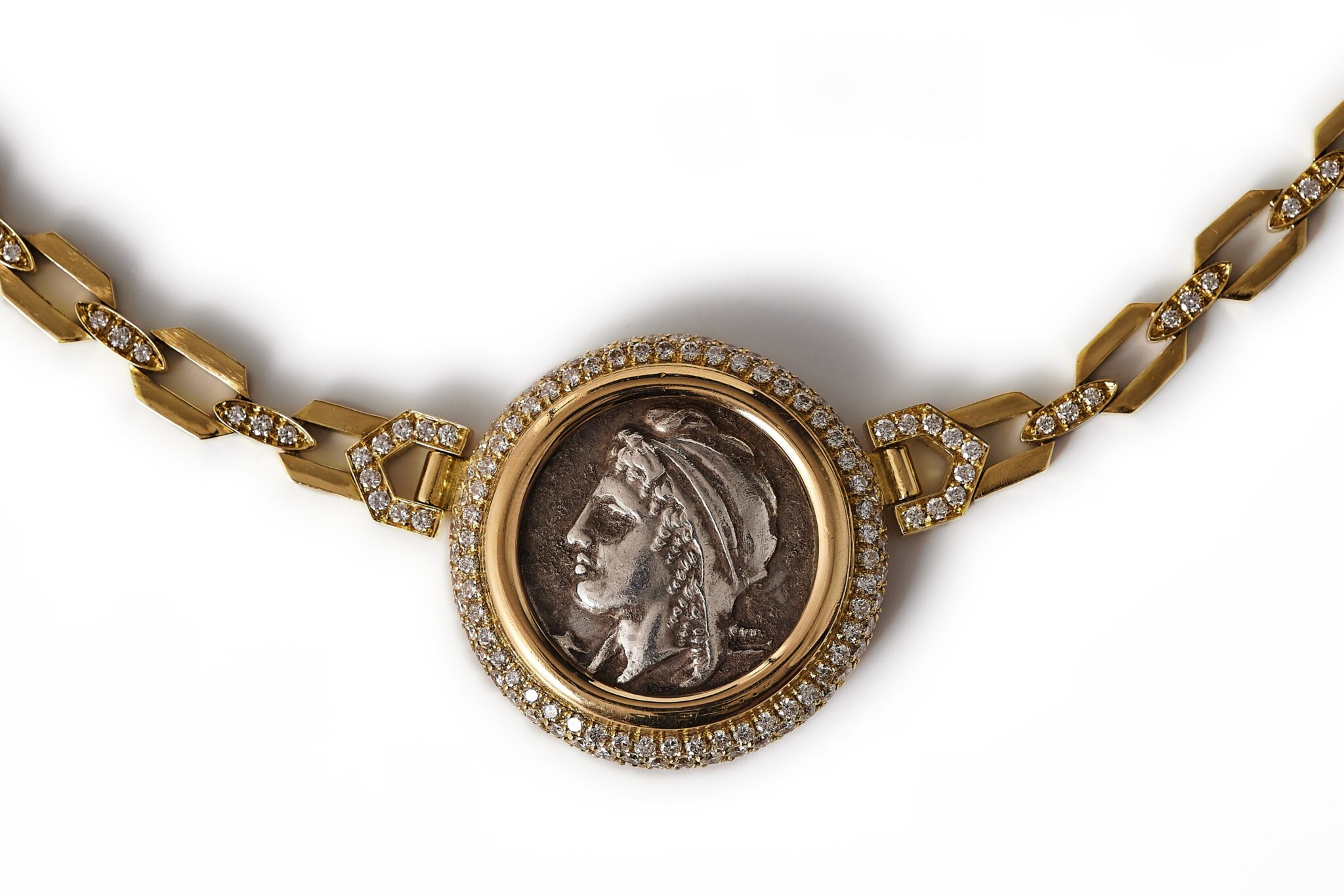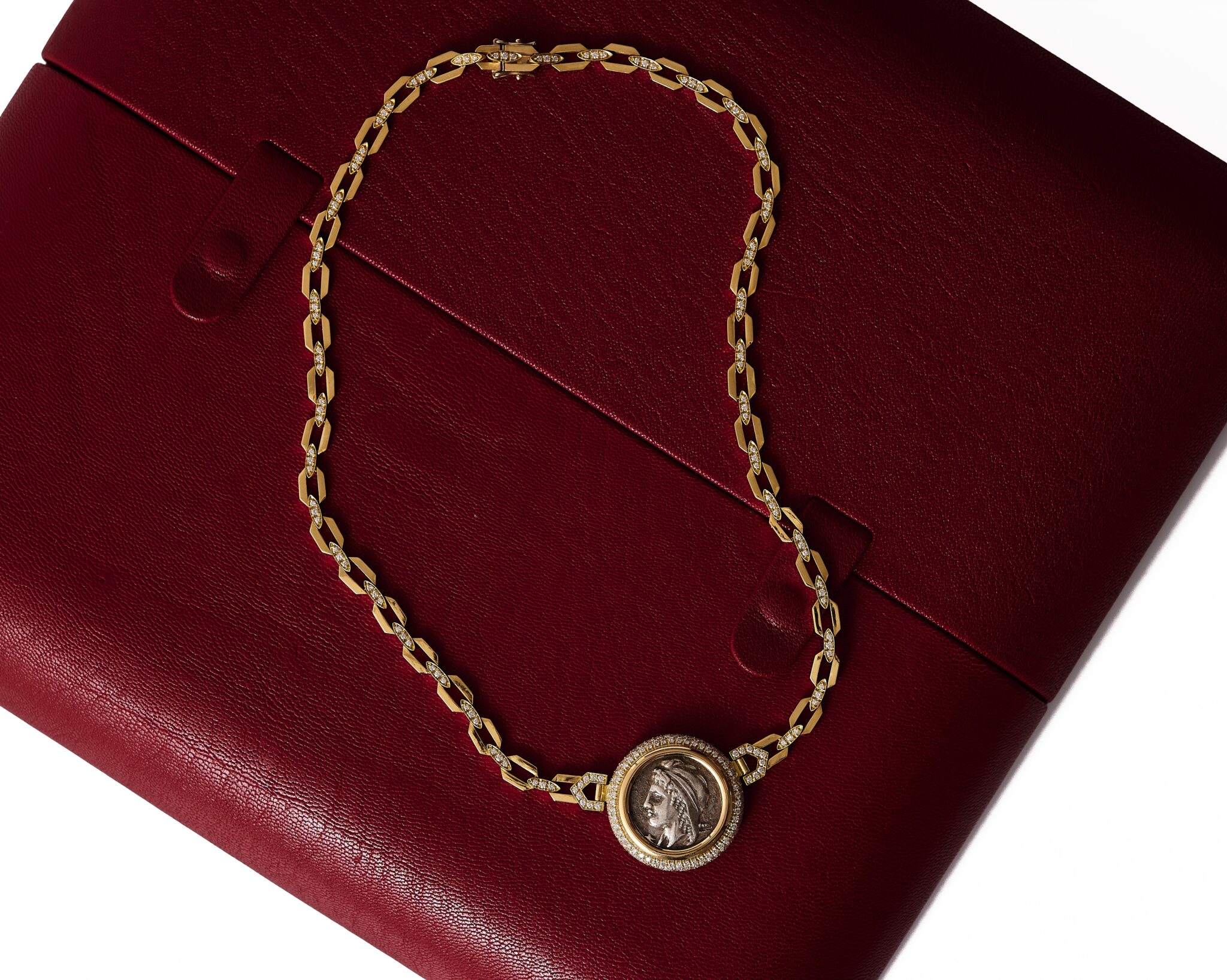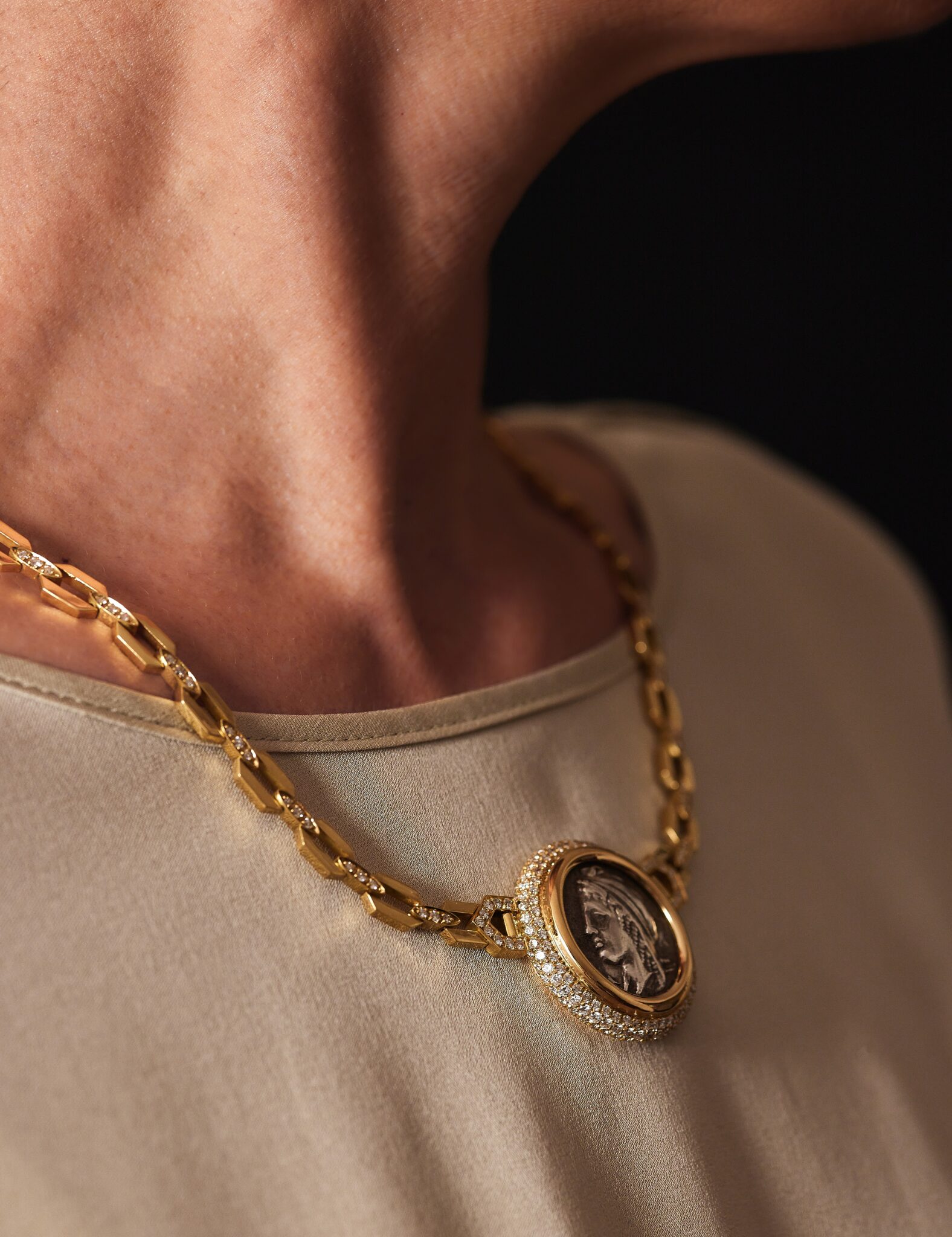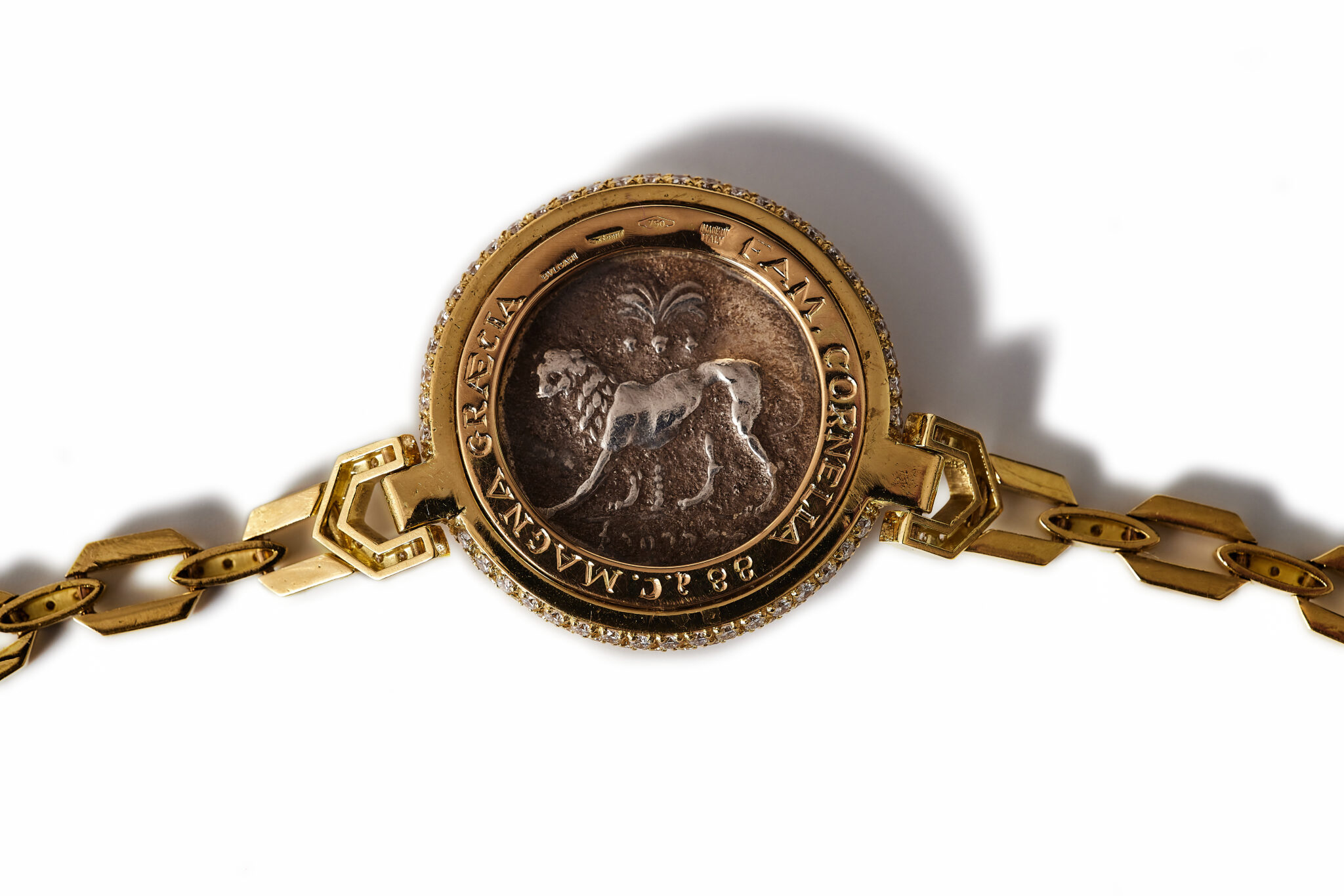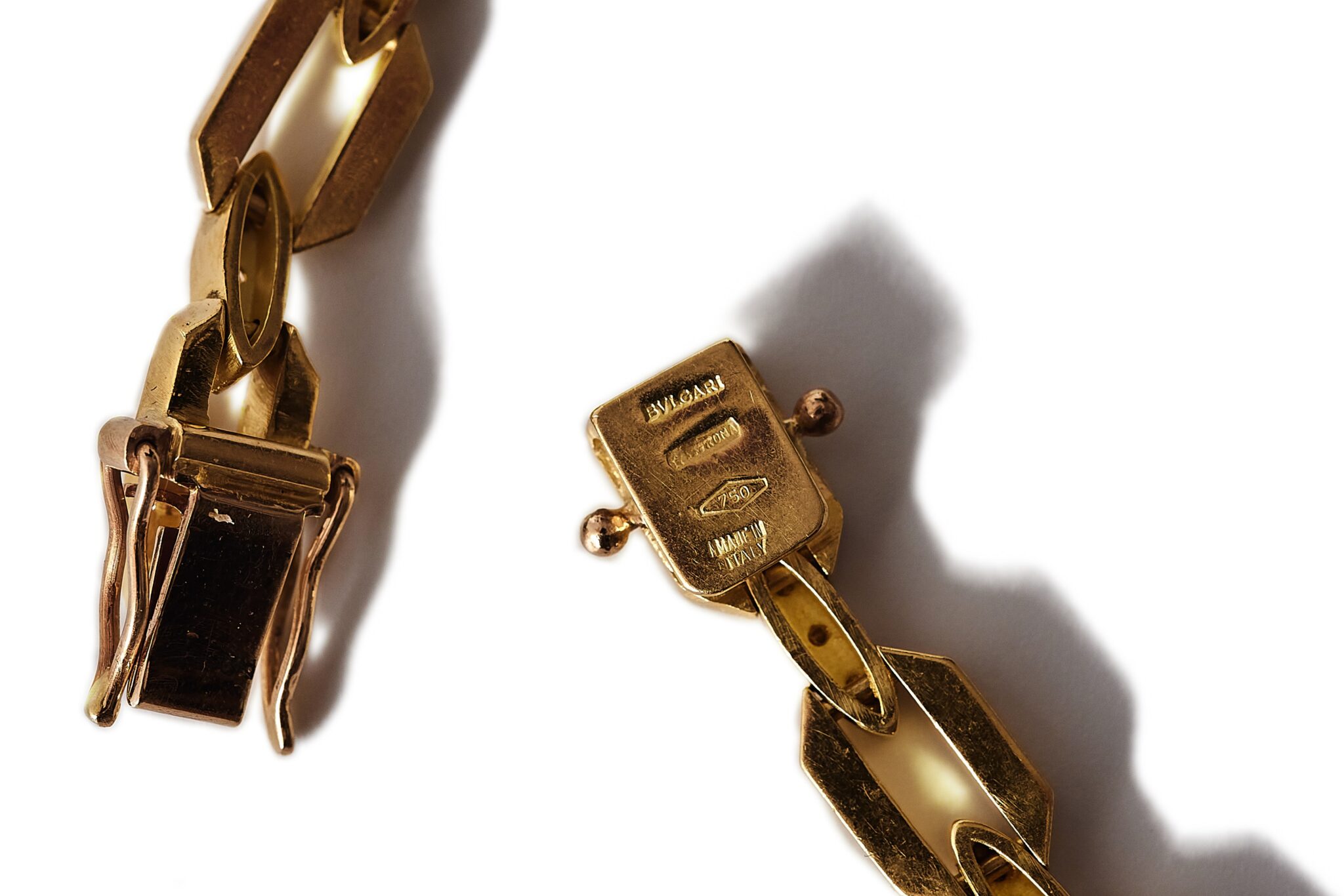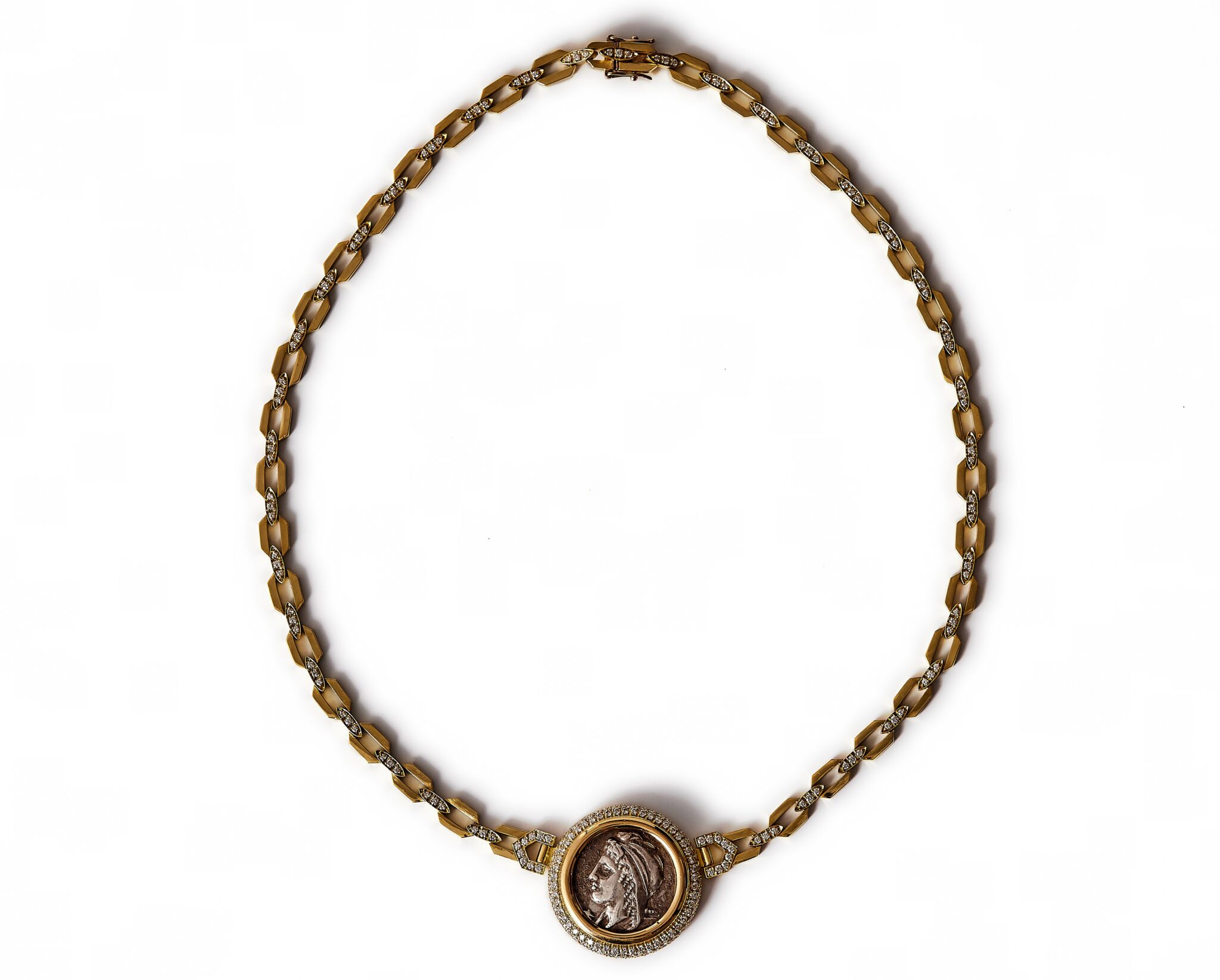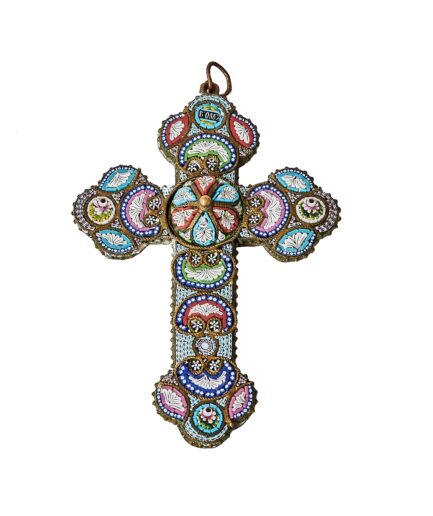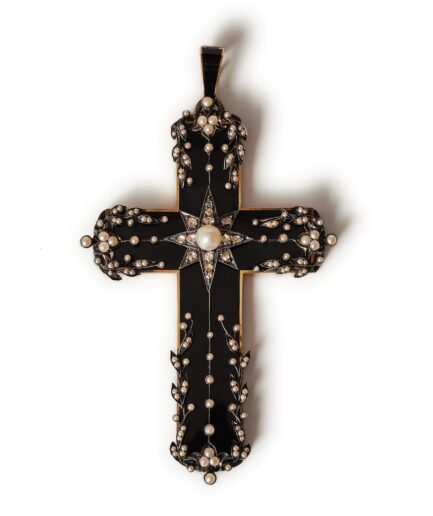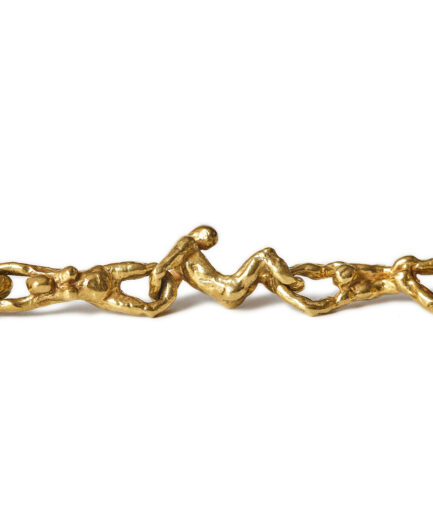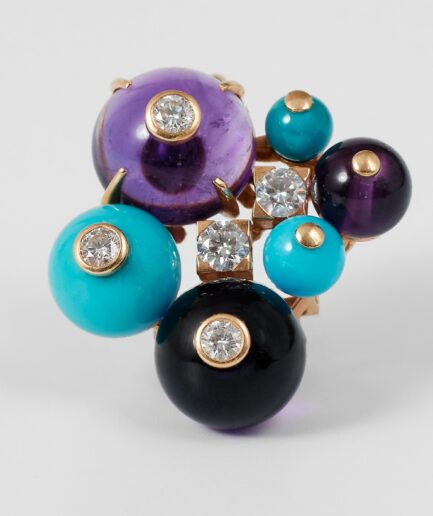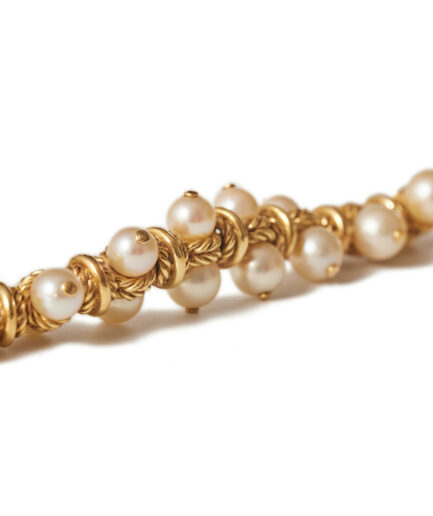Not all Bvlgari Monete pieces are created equal. This very special Bvlgari Monete Necklace features an important ancient silver coin , a Tetradrachm. Set in a diamond crusted bezel on a diamond crusted chain.
Comes in its huge original red leather case from the 1970s.
The necklace is 51 cm long / 20in
Gross weight 93.7 gram
Diamond weight is approximately: 6ct
Back is engraved Fam Cornelia – 88 a.c. Magna Graeca. Coin and lock hallmarked 750, Made in Italy, Workshop registry and signed BVLGARI.
Coin inc setting measures 3.3cm / 1.299in diameter, 51cm long, hidden clasp, original fitted box, 1970s, 93.7gram, approx 6ct high quality brilliant cut natural diamonds.
Magna Graeca / Magna Graecia refers to the area of southern Italy heavily colonized by Greeks from the 8th century BCE onward, where Hellenic art and culture mingled with Roman life.
Cornelia (c. 190–100 BCE) was the daughter of Scipio Africanus and mother of the reformers Tiberius and Gaius Gracchus. Celebrated in Roman tradition as the model of maternal virtue, she famously referred to her children as her greatest jewels. Her legacy endured as a moral touchstone of Roman womanhood. Numismatic research has revealed more and deepened what is know about this coin.
The Coin – Tetradrachm – Masterpiece of Punic Die Engraving
Carthage was a Phoenician city-state in present-day Tunisia. Before the Punic Wars with Rome, Carthage was the greatest power — the richest and most powerful political force in the Mediterranean. Its influence stretched along the entire North African coast, Spain, and Sicily. All these colonies would be lost after the Punic Wars with Rome.
It was only after contact with the Greek city-states in and around Sicily (Naxos, Syracuse, and Messana) that Carthage began minting coins, around the last decade of the 5th century BC. These Greek cities had already begun producing coins of the highest artistic and technical quality from the late Archaic Greek school during the latter part of the 6th century BC.
The so-called Siculo and Punic mints often produced coins of rather crude style, imitating contemporary coinage, mainly used for paying the army. Carthage, under the leadership of Hannibal Mago, seized the opportunity when the Greek city-states in Sicily were weakened by internal conflicts and the exhaustion from the wars between Athens and Sparta (where Syracuse had been an ally of Sparta). Hannibal Mago then invaded western Sicily and defeated the Greek alliance, led by Syracuse, in the Battle of Himera in 409 BC.
This very rare tetradrachm belongs to a small and isolated series, struck from only three known dies. It represents an undisputed masterpiece of “Siculo -Punic” coinage. Certain die-engraving features led the renowned numismatic scholar Jenkins to conclude that this coin may be associated with the Carthaginian invasion of Sicily and the war against Syracusan king Agathocles. Jenkins even went so far as to suggest that the coin might have been minted for the elite soldiers who led Hannibal Mago’s attack. It was struck at the military mints in Sicily around 315–320 BC.
The obverse depicts a woman’s head wearing a Phrygian cap, which in Greek iconography generally signifies an Oriental origin—including Trojans, Amazons, Phrygians, Persians, and also the great Anatolian mother goddess Cybele and her youthful lover Attis.
The head on the obverse has been the subject of much debate. In older writings, numismatists poetically described this head as belonging to Queen Dido, She was the sister of the Tyrian king Pygmalion and a great-niece of Jezebel, wife of King Ahab of Israel, and would have been valued as a founder-figure as her brother fled Phoenicia to found Carthage in 814 BC. She was seen as the personification of Libya, for that would match well with the prowling lion on the reverse. Another convincing interpretation, perhaps, is that this represents a goddess—called Artemis-Astarte / Artemis-tanit by some, and Cybele by others. A Great Goddess. The engravers simply modified the familiar, Euainetos-inspired Artemis-Arethusa by the addition of the oriental tiara or Phrygian cap. The results of that modification were spectacular, and they are widely considered to be masterpieces of Sicilian Greek die engraving.
The reverse shows a striding lion in front of a palm tree with three hanging clusters of dates. Below is an inscription in Punic script, reading s’mmhnt “the people of the camp” (name of the mint). The reverse combines two of Cybele’s symbolic attributes: the palm tree, an ancient Semitic fertility symbol, and the lion, a solar symbol. The dies are engraved in an exceptional artistic style, showcasing restrained Greek tradition.
The obverse portrait radiates serene divinity—gently realistic curls beneath a soft headdress, reminiscent of the finest 5th-century sculpture. The reverse lion is muscular, with a forward-striding body, well-defined veins, and a lush mane. The power of the animal recalls an example found in the Kerameikos cemetery in Athens.
In his final analysis, Jenkins identifies her as Artemis-Tanit, for Artemis wears similar headgear on some Attic and Tarentine terracottas of the 4th Century B.C., and on some Sicilian terracottas of the same era she is associated with a lion or a palm tree, or both. He cites bilingual stelai inscribed in Phoenician and Greek which, in some respects, suggest Artemis was the Greek equivalent of Tanit. Such are the current theories, which always are subject to revision with a new observation or the discovery of tantalizing evidence.
One specimen of this magnificent coin sold at auction for £38,000 (≈ $43,700 USD) in September 2022 at Roma Numismatics in London, another one was sold in Zürich Numismatica Ars Classica summer auction 2025 for 40000CHF (approx. 50 000usd).
Information about the coin comes from Roberto Delzanno Numismatics and Numismatica Ars Classica.
Litterature: Rizzo pl. LXVI, 6 (these dies). Jameson 911 (these dies). SNG Lloyd 1628 (these dies). Kraay-Hirmer pl. 73, 209 (these dies). Jenkins Punic Sicily III, 270.

